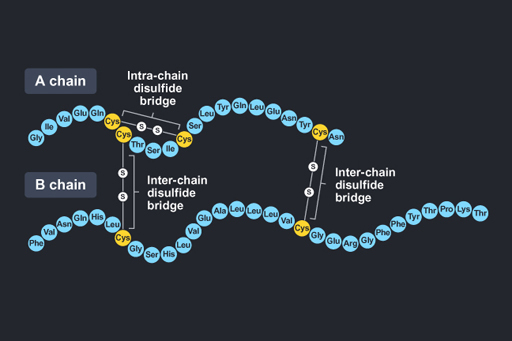2.1 Protein sequencing
For many years, finding out the order of amino acids in a protein – called protein sequencing – was a major goal of biologists.
The first one to be completed was insulin. This is a hormone secreted by the pancreas and involved in regulating glucose in the blood. Glucose is a sugar that the body uses for energy. Insulin is the hormone that is not produced in people with Type 1 diabetes and does not function as it should in people with Type 2 diabetes.
Although insulin is composed of only 51 amino acids, it still took almost six years for a group of research scientists in Cambridge to complete the task. The group was headed by Frederick Sanger, who was awarded the Nobel Prize for his work in 1958. Insulin turned out to be composed of two linked chains of amino acids, as shown in Figure 4. Each amino acid is identified by a three-letter abbreviation of its name.
Since then, protein sequencing has been automated. As a result, the time for the process can now be measured in hours, rather than years.

